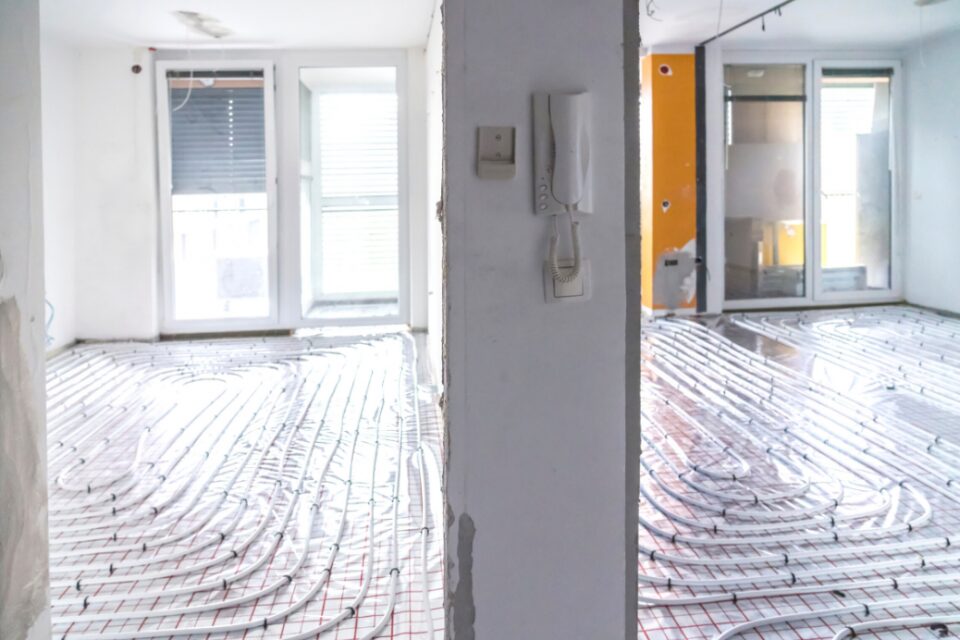Underfloor heating (UFH) is an ideal partner for heat pumps. The beauty of UFH is that rooms and spaces can be heated with water that is warm (not hot) for the system to be effective.
The reason this works is because the heat emitters located beneath the surface of the floor transfer heat from water that circulates through them to the fabric of the floor.
Over time, this heat is released to the room. There are, however, limitations to the amount of heat UFH can emit, and these limits typically centre around how well a floor has been insulated. As with most matters relating to heating, the better the insulation, the better the performance and efficiency.
It stands to follow that the more UFH pipes that are buried in the screed will lower the water temperature required. The general rule is that the more pipes you have should lead to better heat pump efficiency, but this should all be considered by a heating designer.
In houses with good insulation, the surface of the floor will not need to be much warmer than the temperature of the room. As an example, a floor heated to 22C could maintain a room temperature of 20C.
In instances where a heat pump has replaced a boiler with existing UFH, there’s a potential issue because the manifold will probably have a mixing valve to limit the temperature allowed in the underfloor pipes. Mixing valves are not required for heat pump systems, because flow rate temperatures are typically at 40-45C, and you don’t want to ‘dilute’ this heat by mixing it with cold water.
The best surfaces that work efficiently with UFH are typically recognised as concrete, flagstones and tiles.
Timber floors and carpets are very common in the UK, and they are also perfectly acceptable, but they do bring some energy efficiency penalties to the equation when working with ASHPs and may decrease COP. In order to maximise heating effects, as many air voids as possible should be removed during insulation. Doing this will optimise heating performance.



“It stands to follow that the more UFH pipes that are buried in the screed will lower the water temperature required. The general rule is that the more pipes you have should lead to better heat pump efficiency, but this should all be considered by a heating designer”
This is a similar statement made by Heat Geek, but not always true or required. We run on 300mm centres and our circa 195m² floor has around 500m of pipe in it, on 7 loops. More typical for that size floor is around 1.5km. The floor has 200mm of PIR below and 170mm on the sides, so very well insulated.
Typically a heat pump can only provide 25 Deg heated water at its lowest output. Our lowest flow temp is set to 26 degs at 10 degs outside and 31 at -5 (which maybe a little to hot).
Once the heat output required drops to around 20W/m² and below, pipe centres and required flow temp changes very little. The only real change is reaction time. But if you run low and slow 24/7 reaction time doesn’t matter.